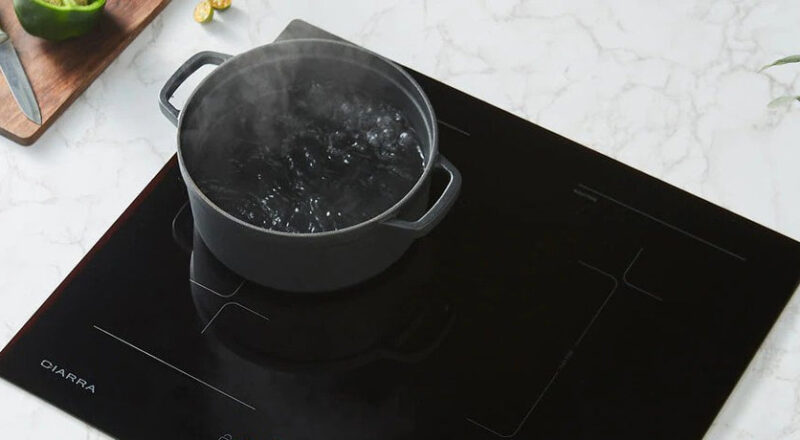Induction cooking has become popular in kitchens worldwide, known for its efficiency and precision. However, many cast iron enthusiasts have noticed issues such as cast iron seasoning flaking after induction. This article explores the causes of this phenomenon and provides practical solutions to prevent it.

Understanding Cast Iron Seasoning
Before delving into the specifics of induction cooking, it’s crucial to understand what cast iron seasoning is. Seasoning refers to the layer of polymerized oil that builds up on the surface of cast iron cookware. This layer provides a natural, non-stick coating, protecting the pan from rust and enhancing its cooking performance.
Importance of Proper Seasoning
Proper seasoning is vital for maintaining the longevity and cooking effectiveness of your cast iron cookware. A well-seasoned pan not only improves food flavor but also ensures even heat distribution, which is essential when using induction cooktops. For more insights on maintaining seasoning, visit this expert guide on induction cooking.
Why Does Seasoning Flake on Induction Cooktops?
When using cast iron on induction cooktops, some users experience flaking of the seasoning. This issue can be attributed to several factors:
1. Rapid Temperature Changes
Induction cooktops can heat cookware very quickly, causing rapid temperature changes. This sudden change can stress the seasoning layer, leading to flaking.
2. Uneven Heating
Induction cooktops, while efficient, can sometimes cause uneven heating on the cookware surface. This can result in certain areas of the pan becoming much hotter than others, contributing to seasoning instability. Learn more about uneven heating and its effects.
3. Incorrect Maintenance
Improper cleaning or maintenance can also lead to seasoning flaking. Using harsh detergents or metal scrubbers can strip away the seasoning layer.
Preventing Seasoning Flaking
Fortunately, there are several measures you can take to prevent cast iron seasoning flaking after induction:
1. Gradual Heating
To minimize stress on the seasoning, gradually heat your cast iron pan. Start with a low setting and slowly increase the temperature.
2. Regular Re-seasoning
Regularly re-seasoning your cast iron cookware can help maintain a strong, resilient seasoning layer. Apply a thin coat of oil and bake it at a high temperature to polymerize the oil and reinforce the seasoning.
3. Use of Compatible Cookware
Ensure that your cast iron cookware is compatible with induction cooktops. Some older or unevenly surfaced cast iron pans may not distribute heat effectively. Consider exploring the differences in cookware compatibility between cast iron and glass by checking out this comparison guide.
Repairing Flaked Seasoning
If you notice flaking, it’s essential to address it promptly to restore your pan’s cooking performance:
1. Remove Loose Seasoning
Gently remove any loose seasoning using a plastic scraper. Avoid metal tools as they may scratch the surface.
2. Re-season the Cookware
Clean the pan thoroughly and apply a fresh layer of oil. Bake it in the oven to re-establish a solid seasoning layer. For more detailed instructions, visit this external resource on seasoning.
Choosing the Right Oil for Seasoning
The type of oil you use for seasoning can significantly impact its durability:
1. High Smoke Point Oils
Choose oils with high smoke points, such as flaxseed, grapeseed, or vegetable oil. These oils are less likely to break down under high temperatures, providing a more stable seasoning.
2. Avoid Low Smoke Point Oils
Avoid using oils with low smoke points, such as butter or extra virgin olive oil, as they can degrade quickly and lead to flaking.

FAQs
1. Can induction cooktops damage cast iron cookware?
Induction cooktops are generally safe for cast iron. However, improper use, such as rapid heating, can affect the seasoning.
2. How often should I re-season my cast iron pan?
It depends on usage, but re-seasoning every few months is typically sufficient to maintain a strong seasoning layer.
3. What is the best way to clean cast iron after cooking on induction?
Use warm water and a soft sponge. Avoid soap and harsh scrubbers to preserve the seasoning.
Understanding and addressing cast iron seasoning flaking after induction ensures your cookware remains a reliable kitchen companion. By adopting proper maintenance techniques, you can enjoy the benefits of cast iron cooking for years to come.
This article contains affiliate links. We may earn a commission at no extra cost to you.

